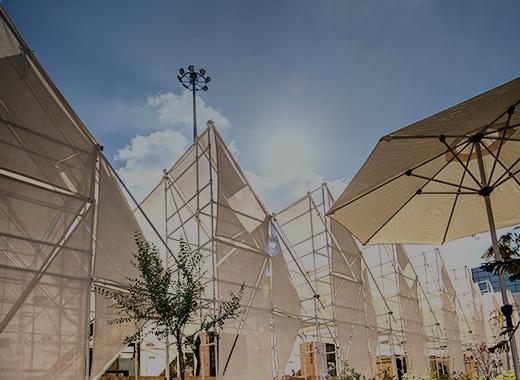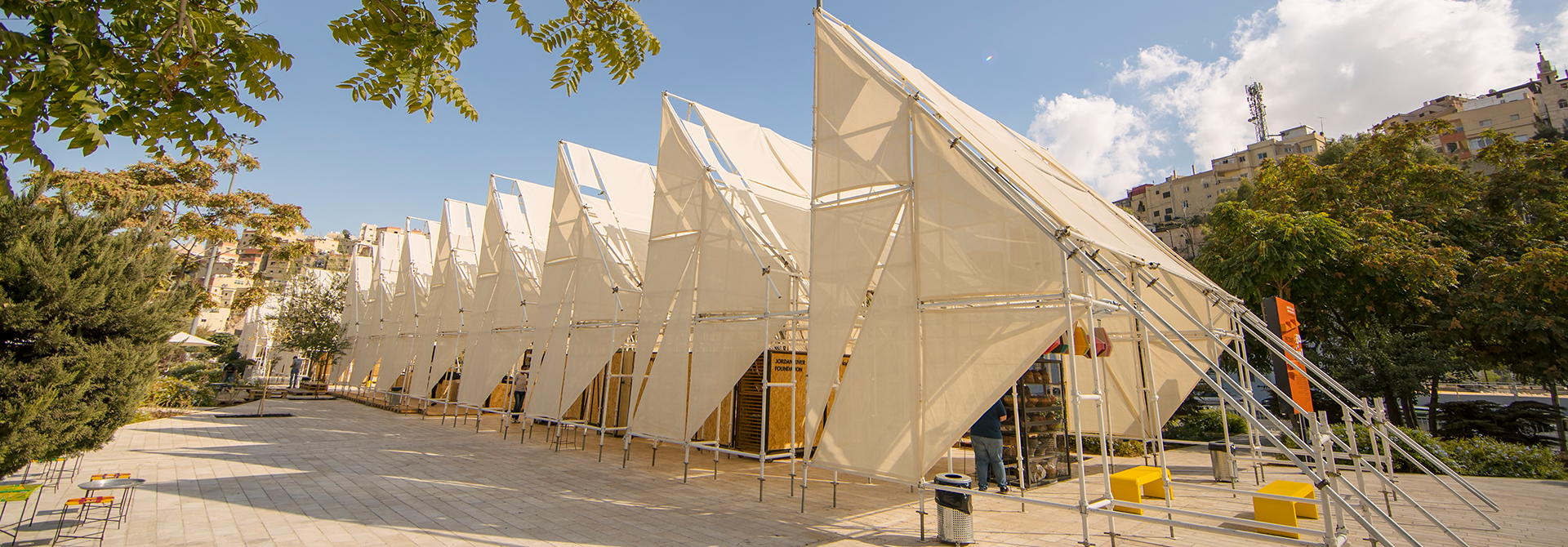

This year the park next to Al Hussein Cultural Center was chosen to be transformed into Amman Design Week 2017's Craft District, featuring an installation titled 'The Stream' designed by Dina Haddadin.

The Stream is composed of fourteen 7m-high modular units aligned to form a 100m-long spine that resembles the stream of Amman – known in Arabic as “Al Seil” – which was buried under the exact location in the mid 1970s. The Stream is a symbol of where the city of Amman started, and where most of our crafts were practiced and inherited. The transient structure of The Stream was built using reusable, cost efficient materials including scaffolding and reusable fabric, creating a semi-controlled environment that hosts the pop-up Crafts District.

This year RAW – founded by Mohammad and Shaban Al Huniti – joined forces with Amman Design Week by sponsoring all wood and metal work fabrication for the Crafts District, in addition to design assistance to the team throughout the preparation period. Designed by Amman Design Week, the shelving of the craft shops were manufactured and installed by RAW using reclaimed found bread cages formerly used to cool bread in bakeries.

RAW learns from many talented local artisans with extensive experience in handmade products, aiming to introduce new technologies and techniques as well as engineering methods to local craftsmen. RAW makes minor adjustments to minimal furniture designs and then fabricates them in an environmentally friendly manner using mainly recycled materials and wood. The company then sells their products at a reasonable price with profit margins that are divided between designers and producers, forming a collaborative and beneficial relationship.
The Mobile MakerSpace, The Stream and the Craft of Making are lined by consciously designed social gathering spaces, also designed by Dina Haddadin and manufactured by RAW, titled ‘The Lanterns’. These suspended structures were built out of multiple rows of plastic plates that were layered to form an inverted lit vault. ‘The Lanterns’ also make a statement about general human consumption, creating a mindfulness about our plastic waste. Each canopy was built using 1,400 plates, the average individual consumption of plastic plates for the coming 5 years.



